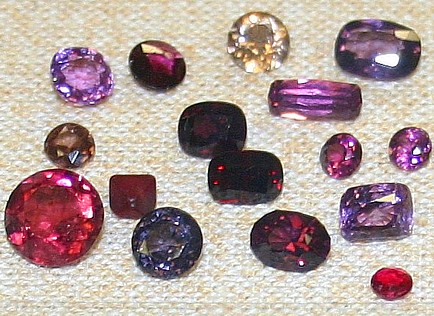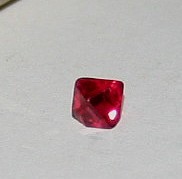
| SPINEL MINERAL FACTS |  |
|
| The Gem and Mineral Collector's Photo Gallery by Nevada Outback |
|
. Spinel Mineral Facts:
Chemical
Formula: MgAl2O4
Colors:
Nearly all shades. Hardness: 8.0 Density: 3.5 to 3.6 Cleavage: None - it has a conchoidal fracture, but no distinct cleavage.
Crystallography: Isometric Luster:. Vitreous, glassy luster. Usually translucent to opaque, at times clear and transparent. Optics: (Refractive Index): n = 1.718 |
|
|
Identification and Diagnostics
Occurrence,
Localities and Origins: Use. When transparent and finely colored is used as a gem. Most desirable when red in color and known as the spinel ruby, balas ruby, etc. Its color is believed to be due to the presence of chromium oxide. Spinels also come in stones of a wide variety of colors. The stones usually are comparatively inexpensive, although their value has been increasing in recent years. Precious spinel is transparent and colorless or some light shade of red, violet, pink blue or green. The bright red variety is known as ruby spinel is easily distinguished from genuine ruby by the fact that it is not doubly refracting and not pleochroic. The best ruby spinels come from Burma and Sri Lanka, where they occur loose in sand associated with zircon, sapphire, garnet, etc. Gem spinels are also mined in Tanzania in East Africa. Return to the Mineral Collectors Information Page |
 |
|

For More information about Spinel as a gem, see:
|
||
Please note that the author, Chris Ralph, retains all copyrights to this entire document and it may not be reproduced, quoted or copied without permission.

NEVADA OUTBACK GEMS TURQUOISE AND JEWELRY